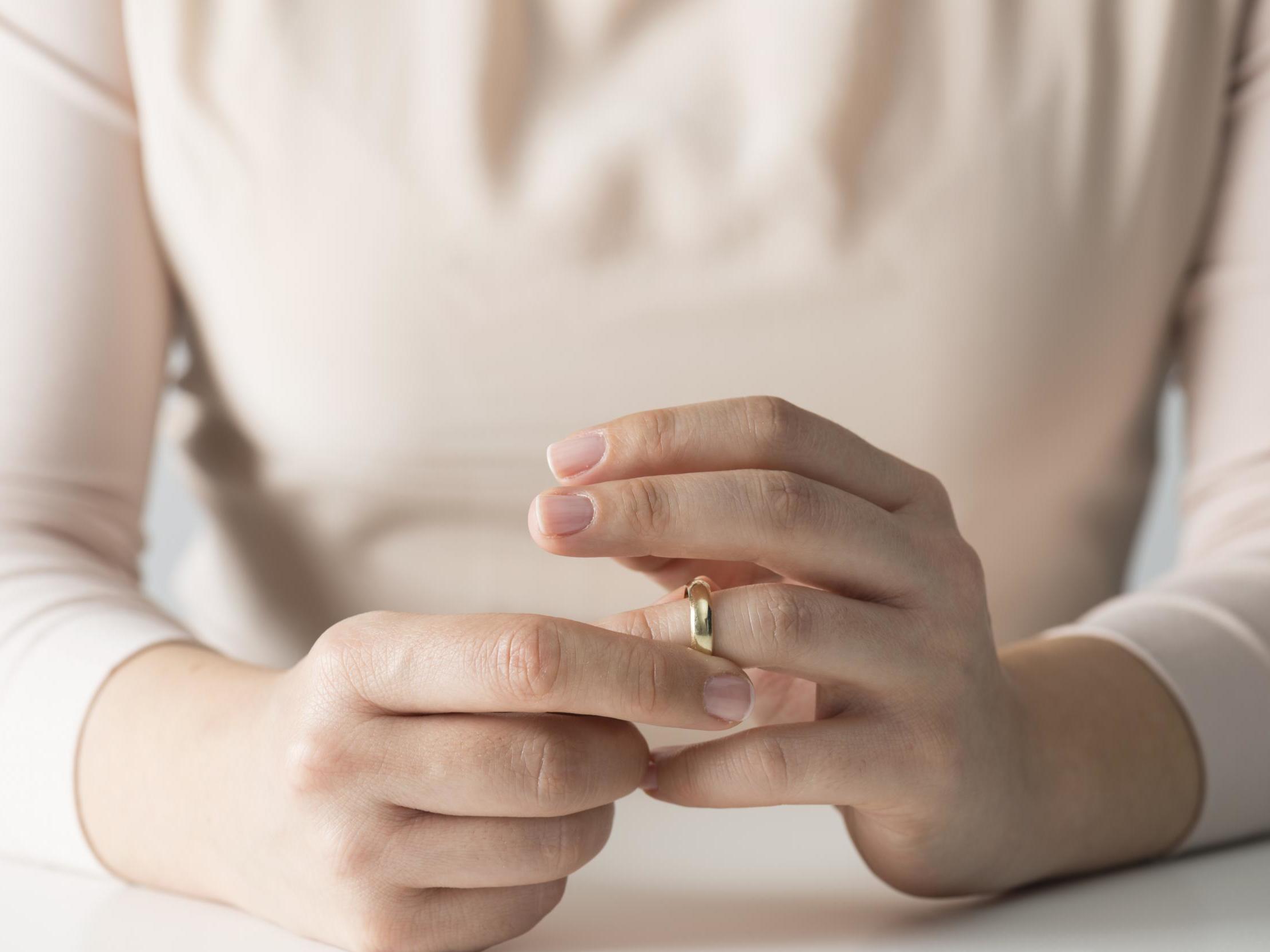Quickie divorce reforms risk long-term problems for women
Could fast-tracked changes make more women financially vulnerable?

Your support helps us to tell the story
From reproductive rights to climate change to Big Tech, The Independent is on the ground when the story is developing. Whether it's investigating the financials of Elon Musk's pro-Trump PAC or producing our latest documentary, 'The A Word', which shines a light on the American women fighting for reproductive rights, we know how important it is to parse out the facts from the messaging.
At such a critical moment in US history, we need reporters on the ground. Your donation allows us to keep sending journalists to speak to both sides of the story.
The Independent is trusted by Americans across the entire political spectrum. And unlike many other quality news outlets, we choose not to lock Americans out of our reporting and analysis with paywalls. We believe quality journalism should be available to everyone, paid for by those who can afford it.
Your support makes all the difference.We’ve long known that divorce is expensive, that splitting assets is a nightmare and that one or both parties often feel the divvy up is deeply unfair.
With divorce often hitting couples in middle age and women historically less likely to have worked, earned and paid into private or state pension arrangements, women have often come out of the deal facing a huge hole where their savings should be.
The complex negotiations still focus, understandably, on how to deal with the marital home and immediate assets rather than pension pots and insurance policies.
When it comes to the breakdown of opposite sex marriages in particular, the difference in savings could be huge. Even with a far greater proportion of women now working, a lifetime of lower incomes, breaks from work and other factors mean the gender pension gap is around £100,000.
And although there is a duty for both parties going through the process to disclose all assets, figures from the Family Law Courts show only 13 per cent of the files for dissolution in 2019 contained some sort of pension settlement order.
Now, in the biggest shake-up of divorce laws for 50 years that will allow couples to divorce without having to attribute fault, at a time when personal finances are currently on very unsteady ground, some personal finance experts fear a rise in the number of quick, private arrangements made without professional advice could heighten the risk that separating couples mismanage the split of pension assets.
Widening the gap
“While many will agree that the UK’s archaic divorce legislation is due an overhaul, the timing of the government’s plans to speed ahead with the introduction of no-fault divorce is questionable with many families under increased strain financially and emotionally,” warns Jon Greer, head of retirement planning at Quilter.
“We know people dealing with the emotional stress of divorce fail to make important decisions about major financial assets, such as their pensions. The introduction of no-fault divorce laws during the current pandemic could exacerbate this, with a further increase in DIY divorces where specialist advice is not easily accessed or sought.
“This could see many miss out on important pension benefits and is likely to have a far greater impact on women than men, given they often have a less sizeable pension of their own, leaving them financially vulnerable in their later years.”
Research by the Pensions Policy Institute shows the average divorced woman already has less than a third of the pension wealth of the average divorced man – with the potential for the impact from DIY divorces to increase that gap significantly.
“Divorcees need to make sure they are receiving professional advice, both legal and financial, before, during and after any divorce case to ensure any settlement is fair for all parties involved,” Greer adds. “It should not be acceptable for pensions to be ignored, since they will have a major impact later in someone’s life.”
But precisely because pension pots can be worth hundreds of thousands of pounds – especially if they need to be split later in life – and few couples have that kind of money available elsewhere to balance the books, those who do look at their pensions assets as part of the separation have several different options.
Choices
Offsetting allows pensions assets to be offset against other assets. One party may stay in the family home rather than receiving part of their ex-spouse’s pension rights, for example.
Pension sharing orders, the preferred method for many, mean pension assets are divided at the time of divorce and there is a clean financial break, or there are more complicated pensions attachments orders, where the pension provider of one party pays an agreed amount direct to the former spouse when the pension rights come into payment.
This doesn’t offer a clean financial break between the couple and risks the loss of future income for the former spouse if the person with the pension rights dies before retiring or the former spouse remarries. This last option has become increasingly popular in recent years, though, despite having such serious weaknesses compared with other options.
The rules in England, Wales and Northern Ireland take into account the total value of pensions each divorcing partner has built up, while in Scotland only the value of the savings built up during the marriage is considered and some options for dividing the assets are not available.
The Pensions Advisory Service provides impartial, free advice on divorce, separation and the financial implications, including a pensions and divorce guidance session for anyone who’s about to start divorce proceedings, as well as appointments to review your financial options.
Join our commenting forum
Join thought-provoking conversations, follow other Independent readers and see their replies
Comments